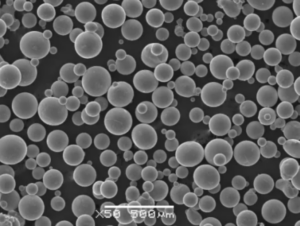Vue d'ensemble Poudres métalliques à haute performance
Les poudres métalliques révolutionnent le paysage de la fabrication avancée, en offrant des performances, une polyvalence et une efficacité inégalées. Les poudres métalliques à haute performance sont conçues pour offrir des propriétés supérieures, ce qui les rend essentielles dans des secteurs tels que l'aérospatiale, l'automobile, la médecine et l'électronique. Ces poudres sont utilisées dans diverses applications, notamment la fabrication additive (impression 3D), la métallurgie des poudres et les processus de revêtement.
Dans ce guide complet, nous allons nous plonger dans le monde des poudres métalliques à haute performance, en explorant leurs types, leurs compositions, leurs propriétés et leurs applications. Nous comparerons également différents modèles de poudres métalliques, donnerons un aperçu de leurs spécifications et examinerons leurs avantages et leurs limites. Notre objectif est de fournir une ressource détaillée, attrayante et optimisée pour le référencement qui vous aide à comprendre et à exploiter le potentiel des poudres métalliques à haute performance.
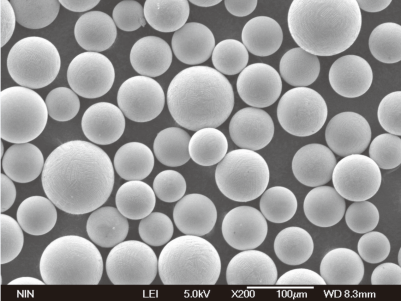
Composition des poudres métalliques à haute performance
Il est essentiel de comprendre la composition des poudres métalliques à haute performance, car elle influence directement leurs propriétés et leurs applications. Ces poudres sont généralement fabriquées à partir d'une variété de métaux et d'alliages, chacun offrant des caractéristiques uniques.
Tableau : Types et compositions des poudres métalliques à haute performance
| Modèle de poudre métallique | Composition | Éléments clés |
|---|---|---|
| Acier inoxydable 316L | Fe, Cr, Ni, Mo | chrome, nickel, molybdène |
| Alliage de titane (Ti-6Al-4V) | Ti, Al, V | Titane, aluminium, vanadium |
| Inconel 718 | Ni, Cr, Fe, Nb, Mo | Nickel, chrome, fer, niobium, molybdène |
| Alliage d'aluminium (AlSi10Mg) | Al, Si, Mg | Aluminium, Silicium, Magnésium |
| Cuivre (Cu-ETP) | Cu | Cuivre |
| Acier à outils (M2) | Fe, W, Mo, Cr, V, C | Tungstène, molybdène, chrome, vanadium, carbone |
| Cobalt-Chrome (CoCrMo) | Co, Cr, Mo | Cobalt, chrome, molybdène |
| Acier maraging (18Ni300) | Fe, Ni, Co, Mo, Ti | Nickel, Cobalt, Molybdène, Titane |
| Alliage de nickel (Ni625) | Ni, Cr, Mo, Nb | Nickel, chrome, molybdène, niobium |
| Carbure de tungstène (WC) | W, C | Tungstène, carbone |
Principaux enseignements :
- Acier inoxydable 316L: Connue pour sa résistance à la corrosion, cette poudre est idéale pour les applications marines et médicales.
- Alliage de titane (Ti-6Al-4V): Léger mais solide, parfait pour l'aérospatiale et les implants médicaux.
- Inconel 718: Grande solidité et résistance aux températures extrêmes, utilisé dans l'aérospatiale et les turbines à gaz.
- Alliage d'aluminium (AlSi10Mg): Léger avec de bonnes propriétés mécaniques, convient pour l'automobile et l'aérospatiale.
- Cuivre (Cu-ETP): Excellente conductivité électrique et thermique, utilisée dans l'électronique et les échangeurs de chaleur.
- Acier à outils (M2): Dureté élevée et résistance à l'usure, idéal pour les outils de coupe.
- Cobalt-Chrome (CoCrMo): Biocompatible et résistant à l'usure, utilisé dans les implants médicaux et les prothèses dentaires.
- Acier maraging (18Ni300): Haute résistance et ténacité, utilisé dans l'outillage et l'ingénierie de haute performance.
- Alliage de nickel (Ni625): Résistant à la corrosion et à l'oxydation, utilisé dans le traitement chimique et les applications marines.
- Carbure de tungstène (WC): Extrêmement dur, utilisé dans les outils de coupe et d'exploitation minière.
Caractéristiques des Poudres métalliques à haute performance
Les caractéristiques uniques des poudres métalliques à haute performance les rendent adaptées à une large gamme d'applications. Les principales caractéristiques comprennent la distribution de la taille des particules, la pureté et la fluidité, qui affectent les performances de la poudre dans divers processus.
Tableau : Propriétés et caractéristiques des poudres métalliques à haute performance
| Propriété | Description |
|---|---|
| Distribution de la taille des particules | La taille uniforme des particules garantit des performances et une qualité constantes. |
| La pureté | Les niveaux de pureté élevés réduisent les défauts et améliorent les propriétés des matériaux. |
| Capacité d'écoulement | Une bonne fluidité est essentielle pour les processus tels que l'impression 3D et la métallurgie des poudres. |
| Densité | Influence la résistance et l'intégrité structurelle du produit final. |
| Résistance à l'oxydation | Prévient la dégradation dans les environnements à haute température. |
| Résistance mécanique | Détermine la durabilité et la capacité de charge du matériau. |
| Conductivité thermique | Important pour les applications nécessitant une dissipation de la chaleur. |
| Conductivité électrique | Crucial pour les composants électroniques et les matériaux conducteurs. |
Principaux enseignements :
- Distribution de la taille des particules: Assure une distribution uniforme au cours de la fabrication, ce qui se traduit par une qualité constante du produit.
- La pureté: Les métaux de haute pureté sont essentiels pour obtenir les propriétés mécaniques et physiques souhaitées.
- Capacité d'écoulement: Essentiel pour assurer le bon fonctionnement de la fabrication additive et d'autres processus basés sur les poudres.
- Densité: Affecte la résistance globale et l'aptitude à l'emploi de la pièce métallique.
- Résistance à l'oxydation: Protège contre la dégradation de l'environnement et prolonge la durée de vie des composants.
- Résistance mécanique: Clé pour les applications structurelles, déterminant la charge qu'un matériau peut supporter.
- Conductivité thermique: Indispensable pour gérer la chaleur dans les applications à hautes performances.
- Conductivité électrique: Important pour la performance des composants électroniques et électriques.

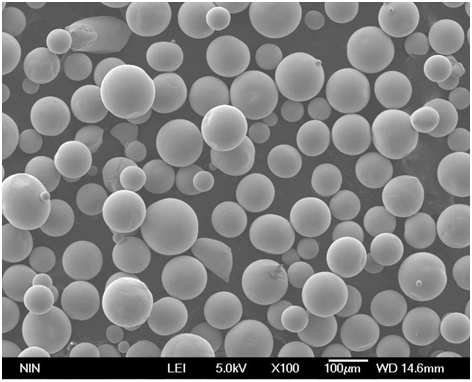
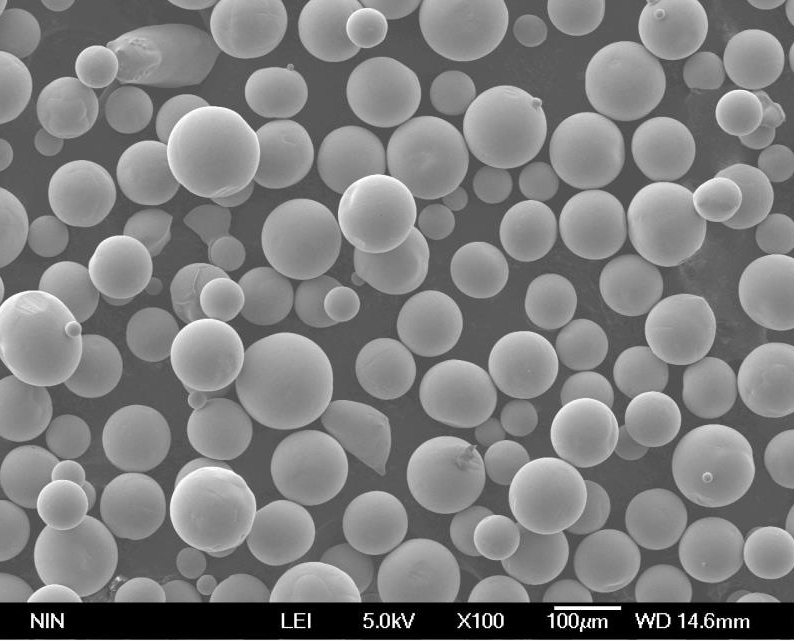
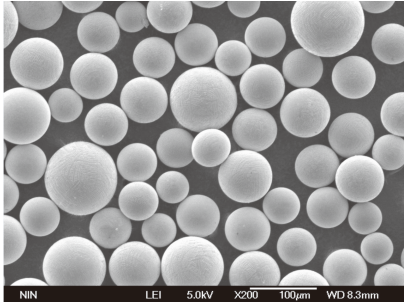

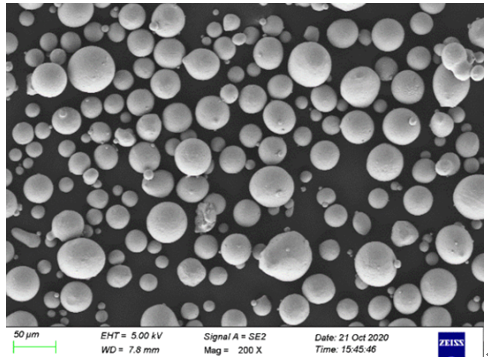
Avantages des poudres métalliques à haute performance
Les poudres métalliques à haute performance offrent de nombreux avantages qui les rendent indispensables dans la fabrication moderne. Ces avantages comprennent des propriétés mécaniques améliorées, une polyvalence dans les applications et une efficacité de production accrue.
Tableau : Avantages des poudres métalliques à haute performance
| Avantage | Description |
|---|---|
| Propriétés mécaniques supérieures | Résistance, dureté et durabilité élevées pour les applications exigeantes. |
| Polyvalence | Convient à un large éventail d'industries, notamment l'aérospatiale, l'automobile et le secteur médical. |
| Efficiency | Permet une production rapide et réduit les déchets de matériaux. |
| Personnalisation | Permet d'adapter les propriétés aux exigences spécifiques des applications. |
| Léger | Réduit le poids total sans compromettre la résistance, ce qui est crucial pour les industries aérospatiale et automobile. |
| Résistance à la corrosion | Améliore la durée de vie et les performances dans les environnements difficiles. |
| Résistance aux températures élevées | Convient aux applications exposées à des températures extrêmes. |
| Biocompatibilité | Sans danger pour les applications médicales telles que les implants et les prothèses. |
| Géométries complexes | Permet de créer des motifs complexes qui sont difficiles à réaliser avec les méthodes traditionnelles. |
| Durabilité | Réduit les déchets et la consommation d'énergie, contribuant ainsi à des processus de fabrication plus écologiques. |
Principaux enseignements :
- Propriétés mécaniques supérieures: Permet de s'assurer que les composants peuvent résister à des contraintes élevées et à des exigences opérationnelles.
- Polyvalence: Fait des poudres métalliques à haute performance une solution de choix dans de nombreuses industries.
- Efficiency: Réduit le temps et les coûts de production, ce qui rend la fabrication plus économique.
- Personnalisation: Permet de concevoir des matériaux aux propriétés spécifiques pour des applications particulières.
- Léger: Essentiel pour réduire la consommation de carburant dans les applications aérospatiales et automobiles.
- Résistance à la corrosion: Important pour prolonger la durée de vie des composants dans les environnements corrosifs.
- Résistance aux températures élevées: Permet l'utilisation dans des environnements à fortes contraintes tels que les turbines et les moteurs.
- Biocompatibilité: Essentiel pour garantir la sécurité et la compatibilité des dispositifs médicaux.
- Géométries complexes: Facilite la production de pièces complexes, ouvrant de nouvelles possibilités en matière de conception et d'ingénierie.
- Durabilité: Soutient les pratiques de fabrication respectueuses de l'environnement.
Applications des poudres métalliques de haute performance
Les poudres métalliques à haute performance sont utilisées dans une variété d'applications, chacune tirant parti de ses propriétés uniques pour améliorer les performances et l'efficacité des produits. Ces applications couvrent de nombreuses industries, soulignant la polyvalence de ces matériaux.
Tableau : Applications des poudres métalliques à haute performance
| L'industrie | application | Description |
|---|---|---|
| Aérospatiale | Aubes de turbines, composants structurels | Les propriétés de haute résistance et de légèreté sont cruciales. |
| Automobile | Pièces de moteur, composants légers | Améliore l'efficacité énergétique et les performances. |
| Médical | Implants, prothèses, instruments chirurgicaux | La biocompatibilité et la précision sont essentielles. |
| Électronique | Composants conducteurs, dissipateurs thermiques | Conductivité électrique et thermique élevée. |
| L'énergie | Composants d'éoliennes, piles à combustible | Durabilité et efficacité dans la production et le stockage d'énergie. |
| Outillage | Outils de coupe, moules, matrices | Dureté élevée et résistance à l'usure pour une durée de vie prolongée de l'outil. |
| Défense | Armure, composants d'armes | Haute résistance et légèreté pour des avantages tactiques. |
| Bijoux | Designs personnalisés, détails complexes | Permet des conceptions créatives et complexes. |
| La construction | Pièces structurelles, fixations | Résistance et durabilité pour les bâtiments et les infrastructures. |
| Aviation | Composants du moteur, pièces structurelles | Des performances et une fiabilité élevées sont essentielles. |
Principaux enseignements :
- Aérospatiale: Les poudres métalliques à haute performance sont utilisées dans les composants critiques où le poids et la résistance sont primordiaux.
- Automobile: Ces poudres contribuent à réduire le poids des véhicules, améliorant ainsi le rendement énergétique et les performances.
- Médical: Les poudres métalliques biocompatibles sont idéales pour créer des implants et des outils chirurgicaux sûrs et durables.
Électronique: Grâce à leur conductivité thermique et électrique élevée, ces poudres sont parfaites pour les composants électroniques.
- L'énergie: La durabilité et l'efficacité sont essentielles pour les composants des systèmes d'énergie renouvelable.
- Outillage: Une dureté et une résistance à l'usure élevées sont essentielles pour fabriquer des outils qui durent plus longtemps.
- Défense: Les matériaux légers et résistants offrent des avantages tactiques dans les applications de défense.
- Bijoux: La capacité de créer des motifs complexes et personnalisés rend ces poudres populaires dans l'industrie de la bijouterie.
- La construction: La solidité et la durabilité sont essentielles pour les composants des bâtiments et des infrastructures.
- Aviation: Les poudres métalliques à haute performance garantissent la fiabilité et la performance des composants critiques de l'aviation.
Spécifications et normes pour Poudres métalliques à haute performance
Lorsqu'on choisit des poudres métalliques à haute performance, il est essentiel de comprendre leurs spécifications et leurs normes. Ces spécifications garantissent que les poudres répondent aux exigences de qualité et de performance nécessaires pour les applications prévues.
Tableau : Spécifications, tailles, qualités et normes
| Modèle de poudre métallique | Spécifications | Tailles | Notes | Normes |
|---|---|---|---|---|
| Acier inoxydable 316L | ASTM A276, ASTM F138 | 15-45 µm | 316L | ISO 5832-1, ASTM F138 |
| Alliage de titane (Ti-6Al-4V) | ASTM F136, ASTM B348 | 20-60 µm | 5e année | ISO 5832-3, ASTM F136 |
| Inconel 718 | AMS 5662, AMS 5663 | 15-53 µm | 718 | AMS 5662, AMS 5663 |
| Alliage d'aluminium (AlSi10Mg) | ASTM B928, ASTM B209 | 20-63 µm | AlSi10Mg | ASTM B209, ISO 3522 |
| Cuivre (Cu-ETP) | ASTM B187, ASTM B152 | 10-45 µm | Cu-ETP | ASTM B187, ASTM B152 |
| Acier à outils (M2) | ASTM A600, ASTM B243 | 10-50 µm | M2 | ASTM A600, ASTM B243 |
| Cobalt-Chrome (CoCrMo) | ASTM F75, ASTM F799 | 15-53 µm | CoCrMo | ASTM F75, ISO 5832-4 |
| Acier maraging (18Ni300) | ASTM A538, AMS 6514 | 10-45 µm | 18ni300 | AMS 6514, ASTM A538 |
| Alliage de nickel (Ni625) | ASTM B443, AMS 5599 | 15-63 µm | 625 | ASTM B443, AMS 5599 |
| Carbure de tungstène (WC) | ISO 9001, ASTM B777 | 1-30 µm | WC | ISO 9001, ASTM B777 |
Principaux enseignements :
- Acier inoxydable 316L: Utilisé pour sa résistance à la corrosion, courant dans les applications médicales et marines.
- Alliage de titane (Ti-6Al-4V): Privilégié dans l'aérospatiale et les implants médicaux pour sa résistance et sa biocompatibilité.
- Inconel 718: Utilisé dans des environnements à haute température, en particulier dans l'industrie aérospatiale et les turbines.
- Alliage d'aluminium (AlSi10Mg): Populaire dans les secteurs de l'automobile et de l'aérospatiale pour ses propriétés de légèreté.
- Cuivre (Cu-ETP): Indispensable en électronique pour son excellente conductivité.
- Acier à outils (M2): Idéal pour les outils de coupe en raison de sa dureté et de sa résistance à l'usure.
- Cobalt-Chrome (CoCrMo): Courant dans les implants médicaux pour sa biocompatibilité.
- Acier maraging (18Ni300): Utilisé dans les applications d'ingénierie à fortes contraintes pour sa résistance.
- Alliage de nickel (Ni625): Préféré pour sa résistance à la corrosion dans les environnements marins et chimiques.
- Carbure de tungstène (WC): Connu pour son extrême dureté, il est utilisé dans les outils de coupe et d'exploitation minière.
Comparaison des poudres métalliques à haute performance
Le choix de la bonne poudre métallique dépend de divers facteurs tels que les propriétés mécaniques, le coût et les exigences de l'application. Nous comparons ici différentes poudres métalliques à haute performance pour vous aider à prendre une décision éclairée.
Tableau : Comparaison des poudres métalliques à haute performance
| Modèle de poudre métallique | La force | Coût | Résistance à la corrosion | Conductivité thermique | Conductivité électrique |
|---|---|---|---|---|---|
| Acier inoxydable 316L | Haut | Modéré | Excellent | Modéré | Faible |
| Alliage de titane (Ti-6Al-4V) | Très élevé | Haut | Bon | Faible | Faible |
| Inconel 718 | Très élevé | Très élevé | Excellent | Modéré | Faible |
| Alliage d'aluminium (AlSi10Mg) | Modéré | Faible | Modéré | Haut | Haut |
| Cuivre (Cu-ETP) | Modéré | Faible | Pauvre | Haut | Très élevé |
| Acier à outils (M2) | Très élevé | Modéré | Modéré | Faible | Faible |
| Cobalt-Chrome (CoCrMo) | Haut | Haut | Excellent | Faible | Faible |
| Acier maraging (18Ni300) | Très élevé | Haut | Modéré | Faible | Faible |
| Alliage de nickel (Ni625) | Haut | Très élevé | Excellent | Modéré | Faible |
| Carbure de tungstène (WC) | Extrêmement élevé | Haut | Pauvre | Faible | Faible |
Principaux enseignements :
- Acier inoxydable 316L: Équilibre entre la solidité et la résistance à la corrosion, convient à une large gamme d'applications.
- Alliage de titane (Ti-6Al-4V): Offre la plus grande résistance mais à un coût plus élevé, idéal pour les applications critiques.
- Inconel 718: Offre une solidité et une résistance à la corrosion supérieures, idéale pour les environnements extrêmes.
- Alliage d'aluminium (AlSi10Mg): Léger et rentable, il est idéal pour l'automobile et l'aérospatiale.
- Cuivre (Cu-ETP): Meilleure conductivité électrique et thermique, mais moins résistant à la corrosion.
- Acier à outils (M2): Dureté et résistance à l'usure exceptionnelles, parfaites pour les outils de coupe.
- Cobalt-Chrome (CoCrMo): Excellent pour les applications médicales en raison de sa biocompatibilité et de sa résistance à l'usure.
- Acier maraging (18Ni300): Offre une résistance et une ténacité élevées, adaptées aux applications techniques.
- Alliage de nickel (Ni625): Excellent pour la résistance à la corrosion, utilisé dans les industries marines et chimiques.
- Carbure de tungstène (WC): Dureté extrême, utilisée dans les outils de coupe et d'exploitation minière.
Fournisseurs et prix des poudres métalliques de haute performance
Savoir où s'approvisionner en poudres métalliques de haute performance et comprendre leur prix peut vous aider à planifier et à budgétiser vos projets.
Tableau : Fournisseurs et détails des prix
| Fournisseur | Modèle de poudre métallique | Prix (par kg) | Disponibilité |
|---|---|---|---|
| Sandvik | Acier inoxydable 316L | $80 | Haut |
| Technologie des charpentiers | Alliage de titane (Ti-6Al-4V) | $150 | Modéré |
| Höganäs | Inconel 718 | $200 | Haut |
| Technologie LPW | Alliage d'aluminium (AlSi10Mg) | $50 | Haut |
| Kymera International | Cuivre (Cu-ETP) | $30 | Haut |
| Arcam AB | Acier à outils (M2) | $90 | Modéré |
| HC Starck | Cobalt-Chrome (CoCrMo) | $180 | Modéré |
| Aubert & Duval | Acier maraging (18Ni300) | $160 | Haut |
| VSMPO-AVISMA | Alliage de nickel (Ni625) | $220 | Haut |
| Tungstène et poudres à l'échelle mondiale | Carbure de tungstène (WC) | $100 | Haut |
Principaux enseignements :
- Sandvik: Fournisseur fiable de poudres d'acier inoxydable avec une grande disponibilité.
- Technologie des charpentiers: Offre des alliages de titane à un prix élevé, avec une disponibilité modérée.
- Höganäs: Fournit des poudres d'Inconel, idéales pour les applications à haute température.
- Technologie LPW: Poudres d'alliage d'aluminium abordables, largement disponibles.
- Kymera International: Fournit des poudres de cuivre rentables.
- Arcam AB: Offre des poudres d'acier à outils avec une disponibilité modérée.
- HC Starck: Fournit des poudres de cobalt-chrome de haute qualité.
- Aubert & Duval: Source fiable de poudres d'acier maraging.
- VSMPO-AVISMA: Fournisseur de premier plan d'alliages de nickel.
- Tungstène et poudres à l'échelle mondiale: Fournit des poudres de carbure de tungstène, essentielles pour les outils de coupe.

Le pour et le contre de la Poudres métalliques à haute performance
Les poudres métalliques à haute performance offrent un mélange d'avantages et de limites. Comprendre ces dernières peut vous aider à prendre des décisions éclairées en fonction de vos besoins et applications spécifiques.
Tableau : Avantages et inconvénients des poudres métalliques à haute performance
| Pour | Cons |
|---|---|
| Haute résistance | Coût: Peut être coûteux en fonction du métal. |
| Polyvalence | Disponibilité: Certaines poudres ont des fournisseurs limités. |
| Personnalisation | Complexité de traitement: Nécessite un équipement spécialisé. |
| Résistance à la corrosion | Oxydation: Certaines poudres sont sujettes à l'oxydation. |
| Léger | Densité: Toutes les poudres ne sont pas légères. |
| Résistance aux températures élevées | Conductivité thermique: Varie selon le type de métal. |
| Biocompatibilité | Conductivité électrique: Toutes les poudres ne sont pas conductrices. |
| Géométries complexes | Déchets matériels: Potentiel de déchets dans certains processus. |
| Durabilité | Temps de production: Peut être plus long pour les pièces complexes. |
Principaux enseignements :
- Haute résistance: Indispensable pour les applications exigeantes, mais peut augmenter les coûts.
- Polyvalence: Convient à de nombreuses industries, bien que la disponibilité puisse varier.
- Personnalisation: Offre des propriétés sur mesure, mais peut nécessiter des techniques de traitement avancées.
- Résistance à la corrosion: Prolonge la durée de vie des composants, bien que certaines poudres soient plus sujettes à l'oxydation.
- Léger: Important pour réduire le poids, mais toutes les poudres n'offrent pas cet avantage.
- Résistance aux températures élevées: Cruciale pour les environnements soumis à de fortes contraintes, bien que la conductivité thermique varie.
- Biocompatibilité: Idéal pour les applications médicales, bien que toutes les poudres ne soient pas adaptées aux utilisations électriques.
- Géométries complexes: Permet des conceptions innovantes, mais peut entraîner un gaspillage de matériaux.
- Durabilité: Favorise la fabrication écologique, bien que les délais de production puissent être plus longs pour les pièces complexes.
FAQ
Tableau : Questions fréquemment posées
| Question | Réponse |
|---|---|
| Qu'est-ce qu'une poudre métallique haute performance ? | Il s'agit de métaux finement pulvérisés, conçus pour offrir des propriétés mécaniques supérieures et une grande polyvalence. |
| Quelles sont les industries qui utilisent des poudres métalliques à haute performance ? | Aérospatiale, automobile, médecine, électronique, énergie, outillage, défense, bijouterie, construction et aviation. |
| Comment sont fabriquées les poudres métalliques à haute performance ? | Par des procédés tels que l'atomisation, l'alliage mécanique et la réduction chimique. |
| Quels sont les avantages de l'utilisation de poudres métalliques à haute performance ? | Résistance supérieure, polyvalence, efficacité, personnalisation et durabilité. |
| Les poudres métalliques à haute performance peuvent-elles être recyclées ? | Oui, ils peuvent être recyclés, ce qui permet de réduire les déchets matériels et de soutenir les pratiques durables. |
| Les poudres métalliques à haute performance sont-elles chères ? | Les coûts varient selon le type de métal et le fournisseur, mais ils peuvent être plus élevés en raison de leurs propriétés avancées. |
| Comment choisir la bonne poudre métallique ? | Tenez compte des exigences de l'application, des propriétés mécaniques, du coût et de la disponibilité des fournisseurs. |
| Quel est le rôle de la taille des particules dans les poudres métalliques ? | Il affecte la fluidité de la poudre, la densité de l'emballage et les performances globales dans les processus de fabrication. |
| Les poudres métalliques posent-elles des problèmes de sécurité ? | Oui, la manipulation et la transformation nécessitent des mesures de sécurité pour éviter les risques d'inhalation et de combustion. |
| Qu'est-ce que la fabrication additive à partir de poudres métalliques ? | Processus de fabrication d'objets en 3D couche par couche à l'aide de poudres métalliques, communément appelé impression 3D. |

